Status of our Shade Trees
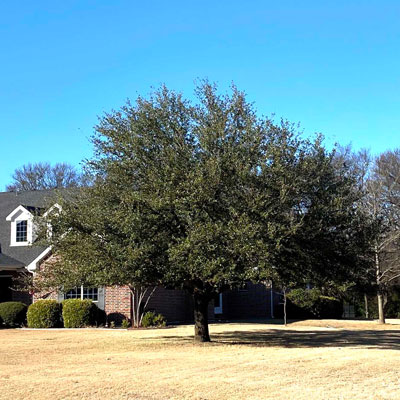
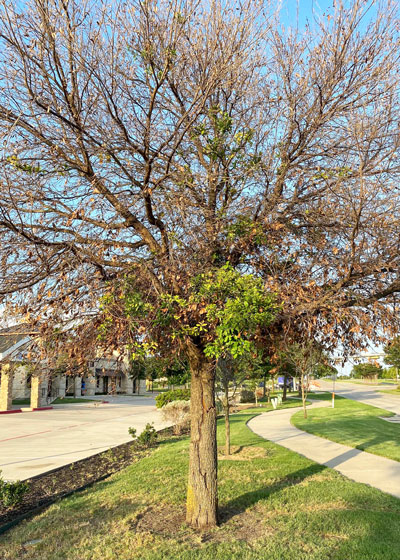
February 2021 damaged more landscape plants than most Texans can remember. The winter that bridged 1983/84, and the record low temperatures of December 1989 were pretty terrible, but it seems like the after-effects of last year’s cold may go on for years into the future.
Landscape shrubs were hurt badly. Hundreds of thousands were replaced last year, or they will be this spring as nursery supplies are rebuilt. We’ll pick up on that topic another week here soon.
However, it’s our shade and accenting trees that concern us the most. And from the questions I’ve been asked repeatedly over the past 11 months, three types of trees have risen to the top of the list: oaks, ashes and crape myrtles.
Note: One of the reasons I wanted to address this topic now is for the safety of my fellow Texans. A grandmother posted on my Facebook page a couple of weeks ago that a limb (wrist-sized) had fallen from one of her trees. It struck her granddaughter in the head, precipitating a serious brain bleed and the need for neurosurgery at Children’s Hospital in Dallas.
These dead limbs have become brittle. Should we have an ice, snow or even windstorm, dead branches are likely to break and fall. That can even happen from their own weight. You need to have them removed, sooner rather than later. For your own safety, if they are higher than you can reach from the ground you need to call in the help of a certified arborist – someone who is experienced, trained and bonded.
Oaks (live oaks, Shumard red oaks, Monterrey oaks and water oaks, among others)…
These trees have suffered in various ways.
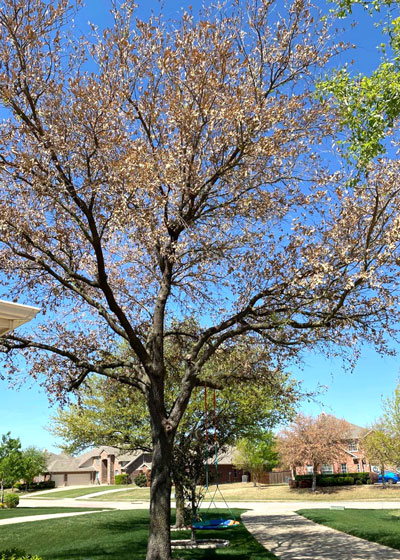
• Live oaks have been exhibiting major bark separation. Specialists with the Texas A&M Forest Service call it “radial shake.”
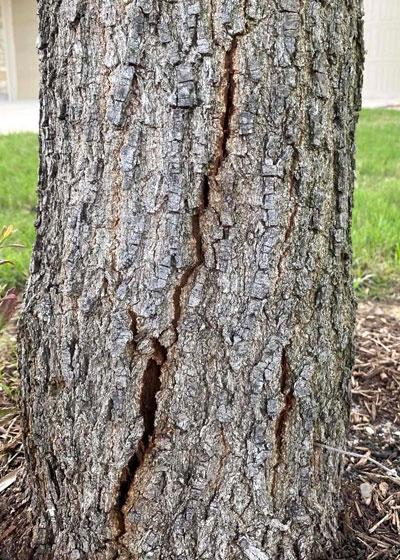
• The bark pops loose from the trunk and vertical cracks in the interior wood of the trunk become visible.
• If bark is lost 50 percent of the way around the trunk at any given spot, the tree is in great jeopardy.
• As another measure of the likelihood of impending loss of a live oak, thinning of the foliar canopy suggests a weakening tree. If half or less of the normal foliage was there through last growing season, that tree is in serious distress.
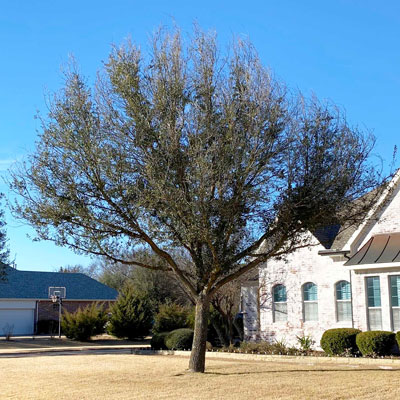
• Many large live oaks lost the outer 8 or 12 feet of their branches. Any new growth that was produced was within the lower canopy. Those dead branches probably need to be removed by a certified arborist as soon as possible (reason below).
• Some live oaks died completely and were completely devoid of leaves all of 2021. Those trees need to be taken down immediately.
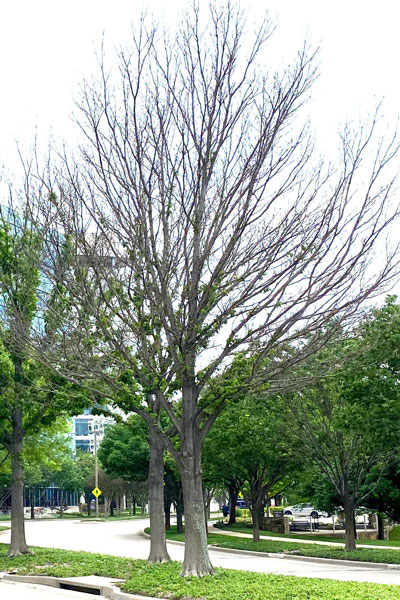

• Some specimens of other species of oaks, including Shumard red oaks, water oaks, willow oaks and others died back, but without exhibiting as much bark loss.
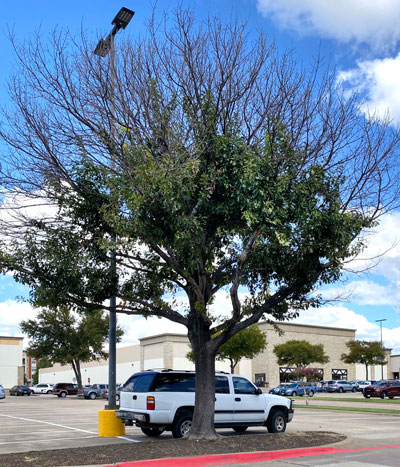
• Outer limbs as long as 10 or 15 feet were completely bare while, at the same time, there was a flush of new growth produced around the trunks and lower branches.
• Those dead branches, as with the dead branches on live oaks, need to be removed by a professional as soon as possible now.
• Monterrey oaks (Mexican white oaks) have been sold across big parts of Texas for the past 30 years. Unfortunately, they are not as winter-hardy as the other oaks I’ve just described and last February simply proved to be too cold for them. I even received reports of their loss from South Texas.
Note: Pruning done on oaks should always be concluded by mid-February (Valentine’s Day, if you need a benchmark). Oak wilt fungus and the insect that carries it become active soon after that, and you don’t want open pruning wounds to make your trees more vulnerable to its invasion.
Ashes of all species…
• Arizona ashes were most notably damaged, but all species were involved.
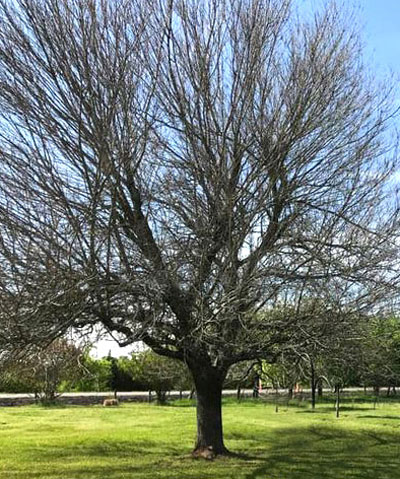
• The plants were beginning to bud out for spring. It’s been my observation that ashes are often damaged more than other types of trees by late, hard freezes.
• The trees were lethargic in leafing back out again. New growth, if it was produced at all, was far down the limbs and trunks.
• These trees are probably not worth the cost of babying them back. The problems with various ash borers, most notably the new entry to Texas, the deadly Emerald Ash Borer, make them a poor investment anyway. It’s time to change to other types of trees.
Crape myrtles…
One of the reasons I was interested in helping start the Crape Myrtle Trails of McKinney in the 1990s was so that we could study comparative differences in the scores of varieties of these popular plants. One of those most important variables was winter hardiness. Over that time we have seen significant and fairly consistent differences in hardiness.

• Most varieties survived last winter with little or no winter damage.
• Some of the tall tree-form varieties that suffered last year, as they have in the past, included Tuscarora, Muskogee, Sioux and Country Red. Natchez is often killed back as well, but somehow it seemed to survive better than usual last year. A few other types were hurt on a plant-by-plant basis.
• Crape myrtles that were damaged were slow to leaf out. By mid-summer those plants had many dead branches in the tops of the plants and new shoots were being produced prolifically from the plants’ bases.
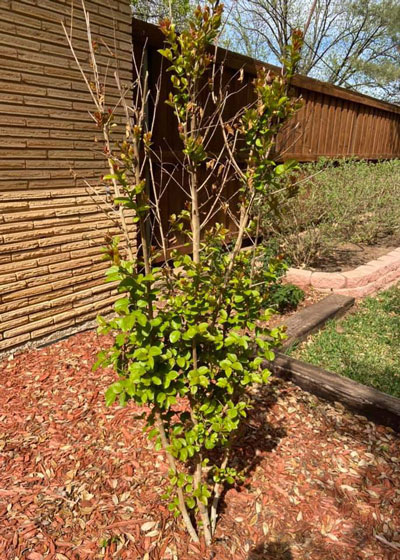
• The best solution for plants that were hurt in that way is to cut the old trunks back to the ground and retrain the new shoots to form new trunks. The first year you’ll want to save the best 10 or 12 stems.
• By late in the growing season you can thin that number to 7 trunks or so. You want to leave extras because they are brittle and one or two may snap out when bumped by a dog, hose or mower.
• By the time the new trunks are 4 or 5 feet tall you can remove all but the 3 or 5 that you intend to leave permanently.
• Gradually remove side branches, but never more than 40 percent of the way up the trunk.
You will be amazed at how quickly your winter-damaged crape myrtle will come back to its former height and glory – usually by the third summer. (This is also a great way to restore the natural beauty of a crape myrtle that has been brutalized by being topped.)
